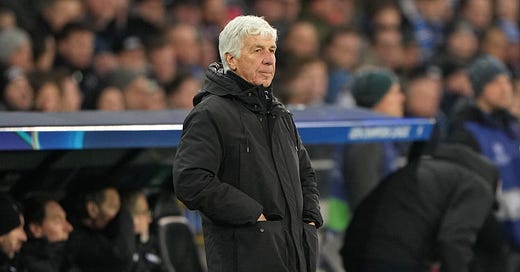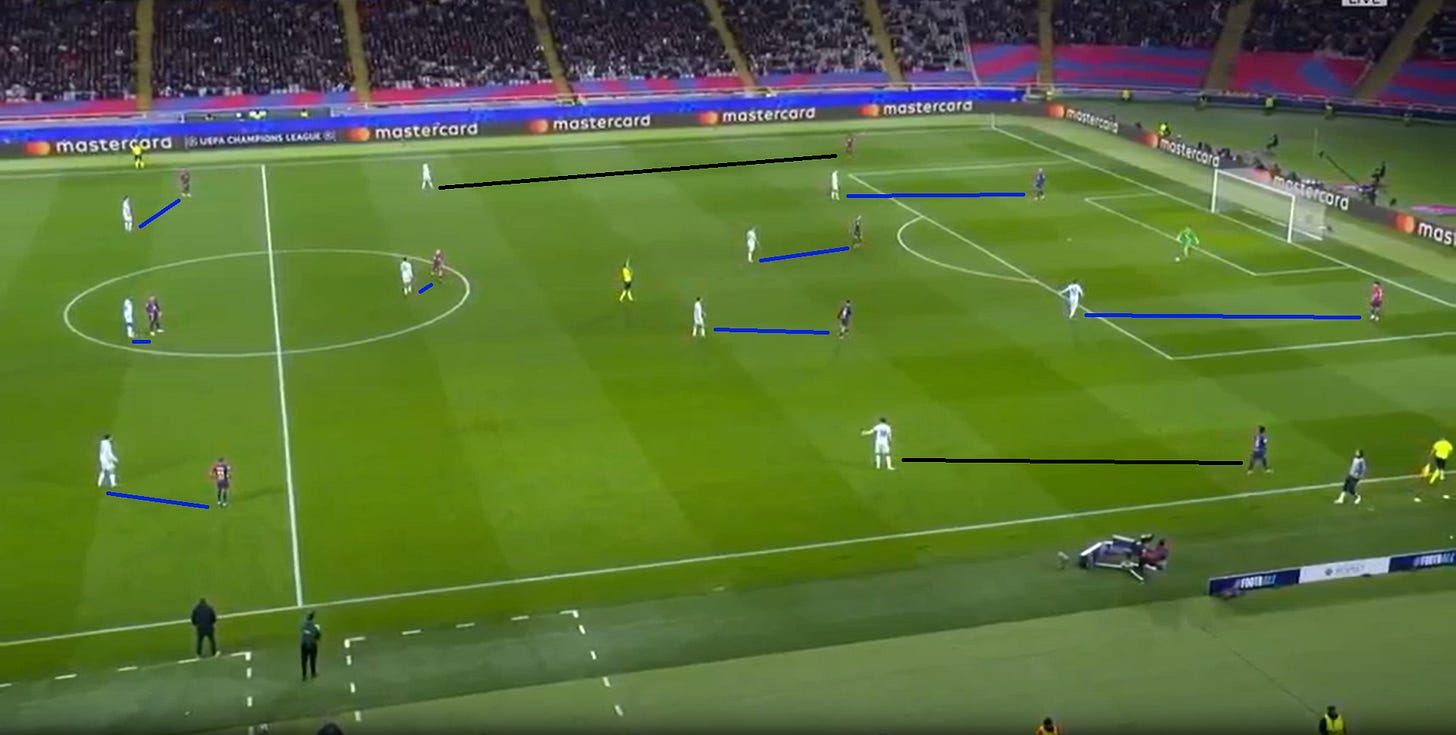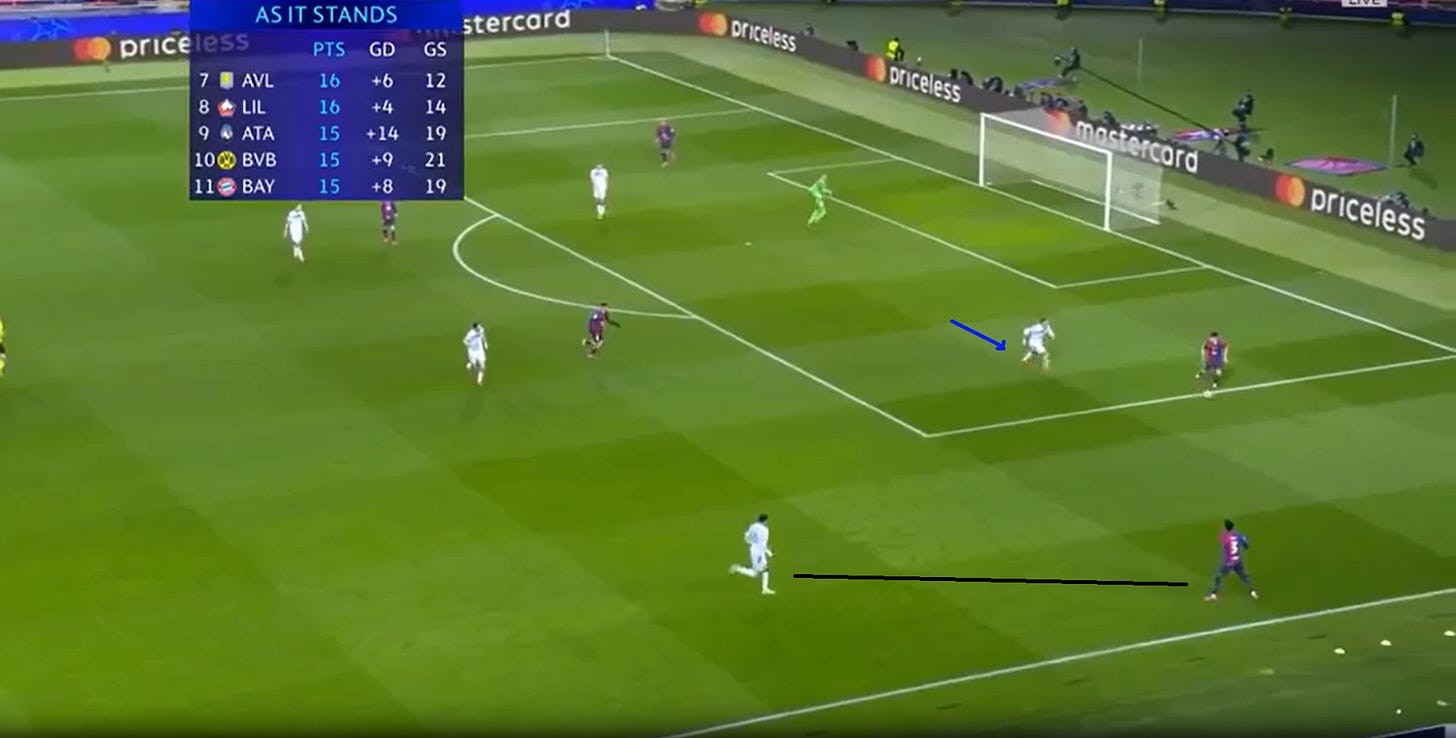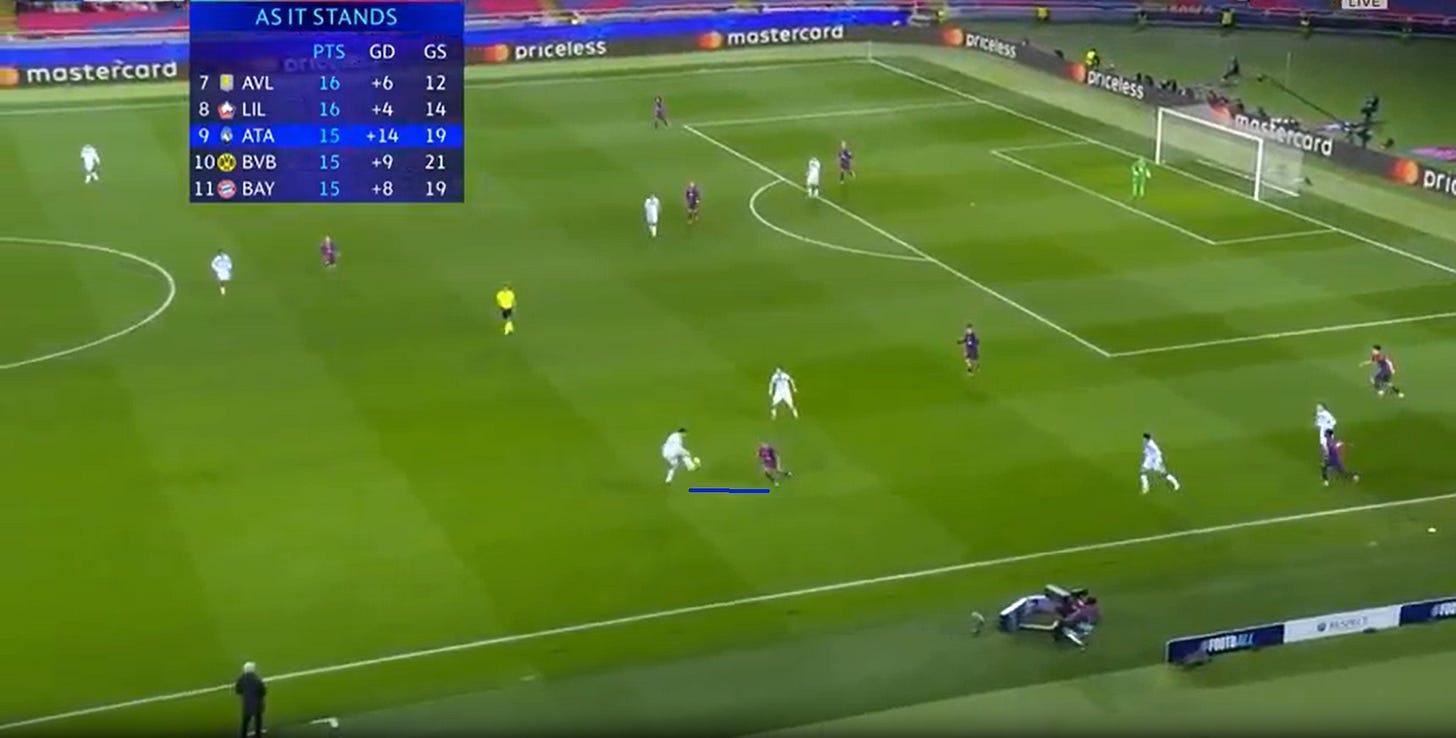Influencing The Opposition Out Of Possession
A qualitative and quantitative look at Gasperini and Atalanta's press
Taking the initiative in football is usually associated with having the ball and dictating the game in possession.
Over the last few years however, Gian Piero Gasperini and Atalanta have taken the initiative out of possession (OOP) with a player marking based system.
During the opposition’s buildup, Gasperini and his team take the bet that they will win the individual challenges and regain possession.
A closer look at Atalanta’s setup shows that where the ball goes can also be an important component to their press.
This post will look at how Atalanta has attempted to influence teams with their press, and how their setup can inspire theoretical ideas out of possession.
The Big Picture
Before going into depth on Atalanta’s press, there are areas on the field that need to be defined as they will be referenced in the post.
It would also be helpful to see what Atalanta’s press looks like. They often lineup in a 1-3-4-1-2 . The image below is from their Champions League tie against Barcelona a few weeks ago.
The marking assignments can be seen all over the field and are highlighted by blue lines. The assignments for Atalanta’s wide midfielders can be seen with the black lines.
It is noticeable that the distance between the wide midfielders and their marks is greater than that of everyone else on the field (and especially the left midfielder #77 Davide Zappacosta).
Since this structure is similar in the games I have watched, I was wondering: does Atalanta try to influence the opposition’s ball movement into wide areas with their positioning in relation to their marking assignments?
The Data
In an attempt to answer my question, I watched a handful of Atalanta’s games. Most of the games were from recent weeks, and a couple were from the end of last season or the beginning of this season.
The data I collected was based on when the opponent was building out of the back. First I defined what was considered a buildup sequence and when a sequence was no longer considered part of the buildup phase1.
I looked at how many times a player from the opposition received in either wide channel in Atalanta’s attacking third during a buildup sequence.
I then looked at how many times Atalanta regained possession within 3 passes after an opposition player received in a wide channel in the attacking third. This data can be seen below.
While the data sample is quite small to draw any real conclusions from, there are interesting aspects to it.
It’s important to note that the style of play and game model of the opponent is an influencing factor.
For example, while Bayer Leverkusen are a very possession oriented team that builds out of their defensive third, they don’t often look to play into wide areas during the buildup due to the structure of their back 3.
Bologna were more direct in their buildup. They looked to play long aerial passes into the central and half space areas in the middle third and try to win the individual duels there (which they did quite well).
In the other five games, the opposition played passes to players that were in the wide channel in Atalanta’s attacking third during most of their buildup sequences.
Was this due to Atalanta’s press, or was this due to those teams’ build structure and game model? The answer varies and more data is needed to say definitively.
Pressing Theories
Data is key for staying tethered to reality and to help see what is really there.
However, one of the things I love most about coaching and football in general is that there is a space for theory and imagination which I believe pushes the game forward.
Here, I am going to discuss how Gaspirini and Atalanta’s pressing setup can provide inspiration for influencing opponents and disguising intentions OOP.
Against Barcelona in the 70th minute, the Catalan side had a goal kick and were building out of their defensive third.
This can be seen in the image below. Atalanta’s marking assignments are seen with the blue lines, and the wide midfielders’ assignments are seen with the black lines.
In the next moment, the 9’s decide to step and pressure the Barcelona goalkeeper and leave their mark assignments (at least temporarily). This can be seen below.
During a game, players shift back and forth between conscious and unconscious thinking. The conscious thinking brain of a player knows that playing into wide areas is often a pressing trap.
The unconscious thinking brain of a player sees shapes, colors, and density. In the image above, Barcelona’s goalkeeper sees the 9’s stepping to pressure him. He also sees his midfielders in front of him and they are tightly marked. It’s dense.
As a result, he plays his left center back who ends up receiving the pass in Atalanta’s right wide channel in the attacking third. This can be seen below.
Atalanta’s near sided 9 adjusts his pressing angle to force Barcelona’s left center back into the wide channel. The right midfielder has also shortened the distance between his marking assignment (seen with the black line).
Barcelona attempt to play a forward pass to a forward checking down into the middle third, but Atalanta win the individual duel. This can be seen below.
There was a similar moment in the first Champions League knockout tie against Club Brugge.
Brugge were building out of the back, and again Atalanta were player for player across the field. The distance between the left midfielder and his marking assignment should be noted.
The right sided 9 left his mark to pressure Brugge’s goalkeeper. Similar to the moment against Barcelona, the goalkeeper probably knows that the space in the wide area is a pressing trap. But as he’s receiving pressure, he sees the density across the field and the openness of the wide area.
The goalkeeper decides to play into the open area, and Atalanta are able to win the individual duel and regain possession. This can be seen below.
While Atalanta’s pressing system is primarily based on player marking, there are elements of hybrid pressing2 carried out by somewhat by the 9’s and primarily by the wide midfielders.
The wide midfielders stay connected with the backline until the cue to pressure is present. This allows Atalanta’s pressing structure to be slightly more vertically secure (numerical advantage along the backline) while using the horizonal weakness3 in their system to influence opposition ball movement into wide areas.
Atalanta’s pressing system is a structure to learn from and could set the foundation for systems that influence the opposition OOP. They do this through player marking, density and by leveraging the horizontal weakness in their system.
Photo taken from Bein Sports.
Buildup sequences were defined as possession that started or cycled through the Central Channel in the Defensive Third in open play. Restarts from fouls or goal kicks were included only if there was an attempt to play within the defensive third. Possession starting from the goalkeeper’s hands was only included if there was an attempt to play within the defensive third.
A buildup sequence was no longer considered buildup when the ball advanced over the halfway line.
This particular idea of hybrid pressing was taken from a post by Jon Mackenzie.
The ideas of vertical and horizontal weaknesses in a pressing system were also taken from Jon Mackenzie.











